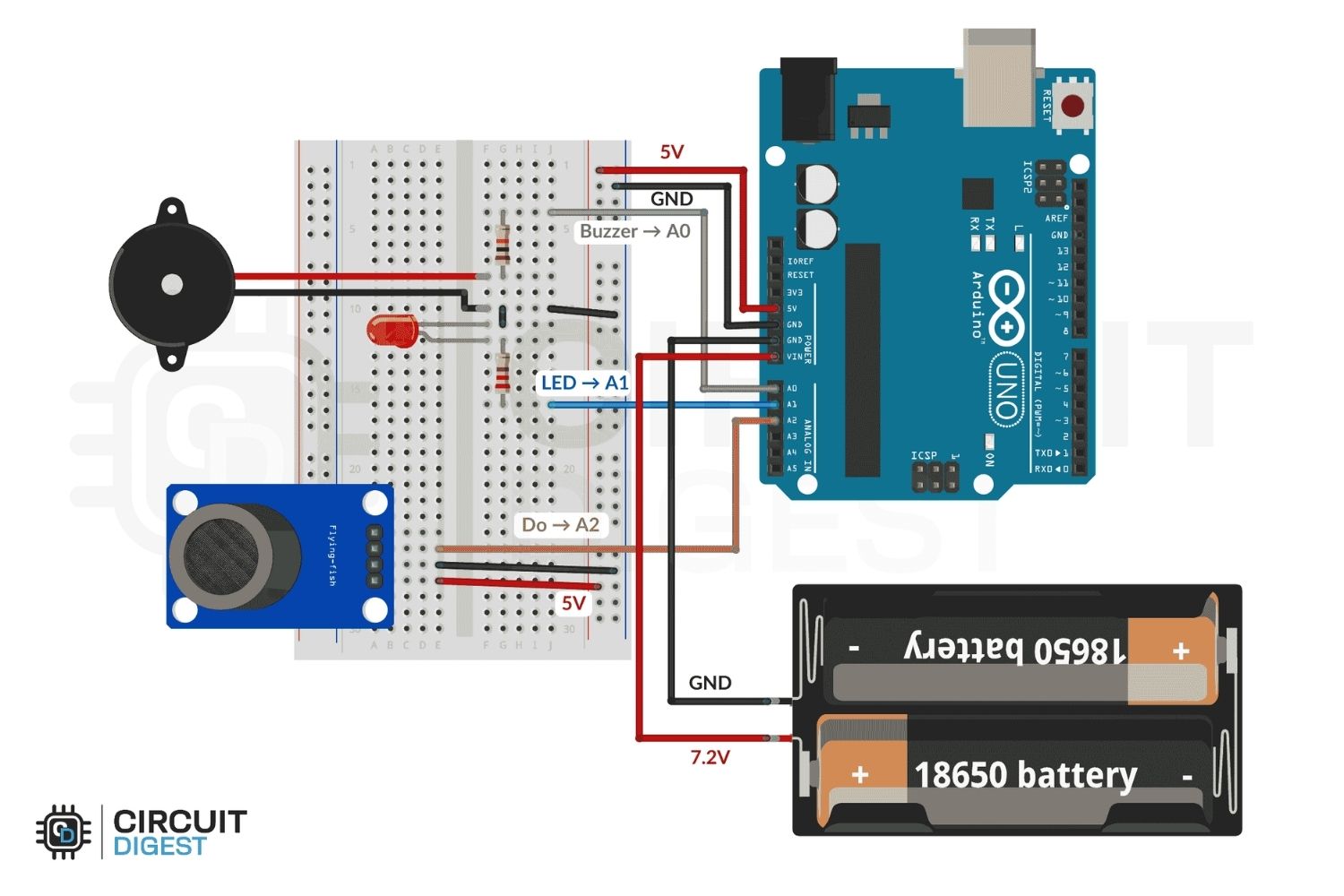Gas leaks can be scary. This entry-level Arduino project presents a low-cost gas leakage detector built using an Arduino Uno and MQ-5 gas sensor. It recognizes when gas concentrations reach unsafe levels and alerts the user.
How It WorksThe MQ-5 sensor does the work of monitoring gas levels. It sends a signal to the Arduino if a leak is detected. The Arduino then activates the buzzer and LED, warning users. Once the gas level returns to a normal level, the alert is turned off. Tuning of the sensor's potentiometer is needed to ensure accurate detection.
Circuit OverviewConnect the MQ-5 digital output to Arduino pin A2, the buzzer to A0 (with optional 10kΩ resistor), and the LED to A1 via a 220Ω resistor. You can power the system with a 7.2V battery or USB.
Arduino CodeThe code reads the MQ-5 sensor’s digital output and activates alerts when a gas leak is detected(LOW signal). When conditions return to normal (HIGH signal), the alerts are deactivated. Both code and schematics are available in the relevant sections.
Applications- Home/Kitchen Safety: For monitoring gas stoves or LPG cylinders.
- Commercial Use: It's an affordable option for restaurants or food trucks.
- Educational Projects: This is its most important application. It's a great way to learn Arduino programming and sensor interfacing.
- RV/Camping: Portable gas safety for outdoor setups.
This DIY detector is for educational purposes. To see how this compares to an actual commercial unit in tech commentary style: DIY vs Commercial Gas Leak Detector — Which One ‘Blows’?
The above is the condensed version of a full project that is available at: Gas Leakage Detector Using Arduino






Comments